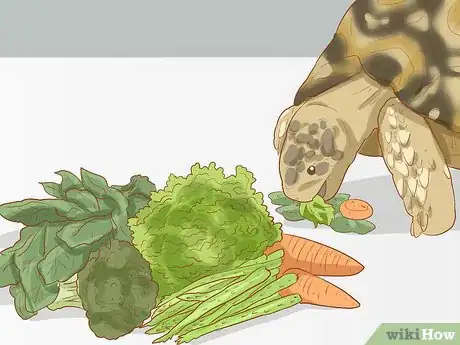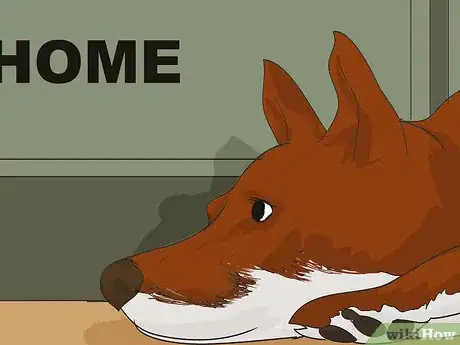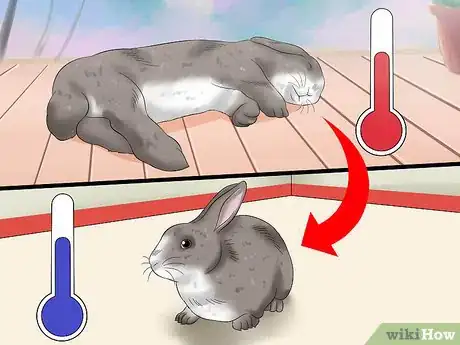wikiHow is a “wiki,” similar to Wikipedia, which means that many of our articles are co-written by multiple authors. To create this article, volunteer authors worked to edit and improve it over time.
There are 7 references cited in this article, which can be found at the bottom of the page.
This article has been viewed 12,124 times.
Learn more...
With climate change becoming an ever-critical environmental issue, it's important to look out for your loved ones, including your pets! Climate change is bringing about a series of conditions in the environment that are affecting people globally - but how about our pets? Animals are impacted by changes in our climate just as we are, so we're eager to keep them protected from the conditions of climate change while taking action to lower our own pets' carbon "pawprint". Read on to answer your questions on how climate change and global warming have affected our pets.
Steps
How can pet owners reduce their carbon footprint?
-
1Look into eco-friendly pet foods. Stray away from excessive packaging and pet food made mainly from beef products, as beef ranching produces high carbon emissions. Instead, try feeding your pets fish-, chicken-, or even insect-based food, or make your pet's food yourself. Check which brands of pet food are more environmentally sustainable than others, and purchase food locally to reduce carbon emissions from national or international transportation.[9]
- Be cautious of vegetarian and vegan pet food options if you were not instructed by a veterinarian to use them. If the use of these pet foods is not properly monitored, they could potentially cause health issues in pets from a lack of nutrients or protein.[10]
- Additionally, cut back on treats, which also contribute to unhealthy levels of pet obesity.[11]
-
2Avoid plastic products for pets. Plastic is a common material used to make pet toys, grooming tools, litter, and other products used by pets on a daily basis. Create your own pet toys from old household items or aim to purchase pet products made locally. Where possible, opt for products made of eco-friendly materials.[12]
- Some examples of products made from eco-friendly materials include biodegradable doggie bags and bamboo kitty litter.[13]
-
3Consider leaving your pets at home when traveling far. Airplane and car emissions produce a high carbon footprint, and bringing your pets along would only increase it. Give thought to leaving a pet at a kennel or with a trusted pet-sitter while away from home, or go to locations that are nearer to home if you must bring your pet with you.[14]
- If you're traveling a shorter distance, especially when staying relatively nearby your home, walk or jog (if the place is particularly close) with your pet or cycle to your location rather than driving with them.[15]
References
- ↑ https://newsroom.ucla.edu/releases/the-truth-about-cats-and-dogs-environmental-impact
- ↑ https://www.ovoenergy.com/blog/lifestyle/carbon-pawprints-the-environmental-impact-of-pets
- ↑ https://www.nationalgeographic.com/family/article/is-your-family-pet-bad-for-the-environment-it-depends
- ↑ http://www.animalplanet.com/pets/top-5-greenest-pets/
- ↑ https://www.nationalgeographic.com/family/article/is-your-family-pet-bad-for-the-environment-it-depends
- ↑ https://vethelpdirect.com/vetblog/2019/10/11/5-ways-to-reduce-your-pets-carbon-pawprint/
- ↑ https://vethelpdirect.com/vetblog/2019/10/11/5-ways-to-reduce-your-pets-carbon-pawprint/
- ↑ https://www.ovoenergy.com/blog/lifestyle/carbon-pawprints-the-environmental-impact-of-pets
- ↑ https://www.ovoenergy.com/blog/lifestyle/carbon-pawprints-the-environmental-impact-of-pets
- ↑ https://vethelpdirect.com/vetblog/2019/10/11/5-ways-to-reduce-your-pets-carbon-pawprint/
- ↑ https://www.ovoenergy.com/blog/lifestyle/carbon-pawprints-the-environmental-impact-of-pets
- ↑ https://vethelpdirect.com/vetblog/2019/10/11/5-ways-to-reduce-your-pets-carbon-pawprint/
- ↑ https://www.nationalgeographic.com/family/article/is-your-family-pet-bad-for-the-environment-it-depends
- ↑ https://vethelpdirect.com/vetblog/2019/10/11/5-ways-to-reduce-your-pets-carbon-pawprint/
- ↑ https://vethelpdirect.com/vetblog/2019/10/11/5-ways-to-reduce-your-pets-carbon-pawprint/
- ↑ https://www.nationalgeographic.com/animals/article/how-extreme-heat-can-affect-our-pets-and-how-to-help-them
- ↑ https://www.nationalgeographic.com/animals/article/how-extreme-heat-can-affect-our-pets-and-how-to-help-them
- ↑ https://opensanctuary.org/article/tips-for-creating-a-more-eco-friendly-sanctuary/
- ↑ https://opensanctuary.org/article/tips-for-creating-a-more-eco-friendly-sanctuary/

















-Step-14-Version-6.webp)
















































